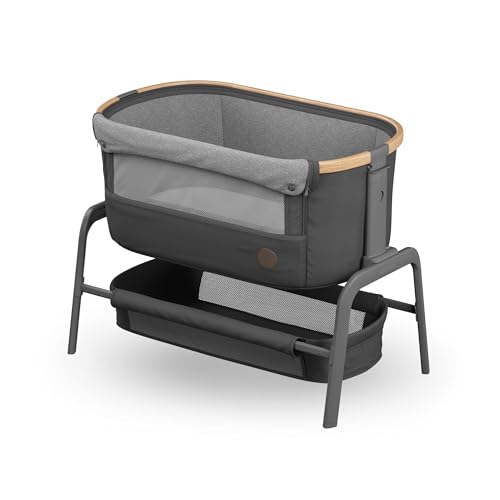13 Things You Should Know About Bedside Cot That Attaches To Bed That You Might Never Have Known

The Modern Bedside Cot: A Comprehensive Guide to Bedside Cots That Attach to Beds
In today's busy world, parenting has actually progressed significantly, with the focus on developing a safe and comfortable environment for infants and young children. Among the significant improvements in this realm is the bedside cot, a versatile solution that parents can use to keep their newborns close, specifically during the vital early months. This post explores the advantages, functions, and considerations of using a bedside cot that connects to a bed.
What is a Bedside Cot?
A bedside cot, often described as a co-sleeper or sidecar crib, is a specifically designed crib that connects to a parent's bed, using an accessible sleeping space for infants. Bedside Cot For Convertible Use offer the convenience of co-sleeping while maintaining a different sleeping environment for the kid.
Secret Features of Bedside Cots
- Safety Standards: Bedside cots are designed to adhere to high security standards, making sure that there are no spaces in between the cot and the parent's bed, therefore decreasing the danger of entrapment.
- Adjustable Height: Most bedside cots come with adjustable height settings, permitting them to align perfectly with the parents' bed mattress.
- Convenience: Having the baby within arm's reach can help with nighttime feedings and soothing, minimizing the requirement for parents to totally awaken.
- Mobility: Many models are lightweight and easily collapsible, making them ideal for travel or for households with restricted space.
Advantages of Using a Bedside Cot
The bedside cot provides multiple benefits, including:
- Enhanced Bonding: The close distance fosters emotional bonding and security for both the baby and the moms and dad.
- Reduce of Feeding: Breastfeeding mothers can quickly access their babies for nighttime feeds without needing to get out of bed.
- Promotes Safe Sleep: Parents can monitor their kid's sleeping patterns and breathing carefully, minimizing anxiety.
- Convenient Access: Parents can rapidly and quickly relieve or address their baby without fully getting up.
Selecting the Right Bedside Cot
With different options readily available in the market, it is vital to consider numerous aspects when selecting a bedside cot:
1. Safety Features
Constantly look for security accreditations, consisting of compliance with appropriate requirements. Ensure the cot has functions such as:
- Sturdy frame
- Anti-tipping design
- Safe attachment mechanism
2. Product and Construction
The product needs to be non-toxic and safe for infants. Select cots made from natural wood or high-quality certified products. Also, inspect that Bedside Cot For Convertible Use is firm and fits comfortably within the cot to avoid any risks.
3. Size and Compatibility
Consider the size of your bed and the readily available space in your bed room. Bedside cots are available in different sizes, so make sure to select one that fits easily along with your bed without blocking motion.
4. Mobility
If you plan to transfer the cot frequently, search for lightweight options with wheels or collapsible designs for easy transportation.
Popular Bedside Cots on the marketplace
| Bedside Cot Model | Secret Features | Cost Range |
|---|---|---|
| Chicco Next2Me | Adjustable height, breathability mesh, foldable. | ₤ 200 - ₤ 250 |
| BabyBjörn Cradle | Light-weight, natural materials, easy to move. | ₤ 299 - ₤ 349 |
| Arm's Reach Concept 2 | Easy to attach/detach, safety strap, bed mattress consisted of. | ₤ 150 - ₤ 200 |
| Dream On Me Co-Sleeper | Light-weight, portable, different color options. | ₤ 150 - ₤ 180 |
Frequently Asked Questions (FAQs)
1. Is a bedside cot safe for my baby?
Yes, as long as it satisfies safety standards and is utilized correctly. Constantly guarantee the cot is securely connected to your bed without any gaps.
2. At what age can my baby use a bedside cot?
Many bedside cots appropriate from birth until the child can stay up individually or when they begin to move, generally around 5-6 months.
3. Can I use a typical crib as a bedside cot?
Standard cribs, while roomy, are not designed to connect to beds and frequently lack the security features that bedside cots offer. It is best to use a cot specifically developed for this function.
4. How do I clean up a bedside cot?
The majority of models have detachable, washable material covers, while wood frames can be cleaned down with a damp cloth and mild soap.
5. Are there any disadvantages to utilizing a bedside cot?
While they are convenient, they may not be ideal for all families. Bedside Cot For Baby's Room might find they choose a separate crib for comfort or if their infant has sleep disturbances.
Bedside cots that connect to beds offer a special and convenient solution for modern parents wishing to keep their infants close during the night. They open doors to safer co-sleeping choices, encourage bonding, and simplify nighttime routines. With the variety of designs readily available, parents should thoroughly consider their individual needs and choices, together with security functions and ease of use, to select the ideal bedside cot. As parenting continues to evolve, bedside cots represent a harmonious blend of tradition and development in cultivating a supporting environment for new households.

